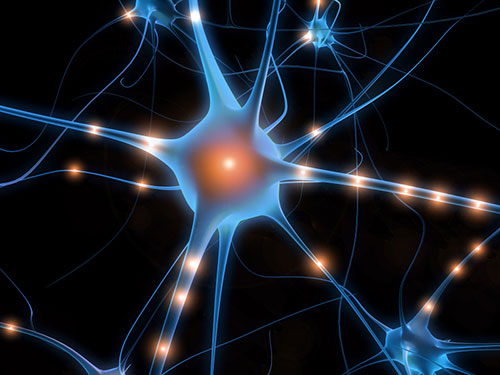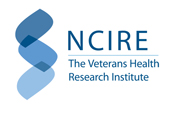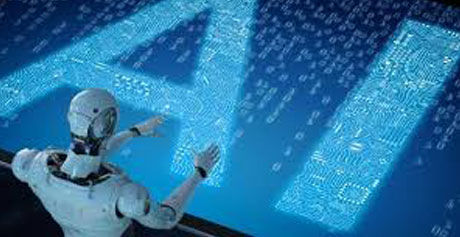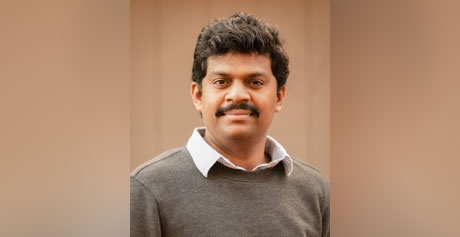Innovative Therapy and High Technology Brain Imaging Aid Veterans and TBI Research
 Thomas Manuel and Shawn Kelley are Veterans of different eras.
Thomas Manuel and Shawn Kelley are Veterans of different eras.
Manuel, 69, fought in the jungles of Vietnam; Kelley, 25, in Afghanistan’s deserts. The enemies, weapons and battle arenas differed greatly, but the wounds to their brains are all too common for war Veterans.
Studies estimate up to 20 percent of Veterans suffer traumatic brain injury (TBI), and many of them develop post-traumatic stress (PTS). These wounds are often called “invisible injuries” because you see no bandages, casts or crutches for symptoms such as confusion, anxiety and memory disorder.
Researchers affiliated with NCIRE – The Veterans Health Research Institute – are providing innovative neurocognitive therapy to improve the lives of Veterans with TBI. They utilize the most powerful brain imaging technology to offer a window into the brain to potentially see, in minute detail, the structural harm that TBI causes inside the brain.
Since 2000, there have been more than 350,000 diagnosed cases of TBI among U.S. troops, according to the Department of Defense. Many of these men and women returning from war suffer persistent symptoms of cognitive dysfunction. And in their civilian lives, some of these symptoms hamper them in classrooms, at work and at home.
“Many Veterans, because of their injuries, often have serious problems with regulating attention and with organizing, planning, carrying out complex tasks and sometimes even carrying out daily tasks,” said Tatjana Novakovic-Agopian, PhD, a rehabilitation neuropsychologist at the San Francisco VA Medical Center and assistant professor of psychiatry and neurology at the University of California, San Francisco (UCSF).
Novakovic-Agopian leads a therapy program – Goal-Oriented Attentional Self-Regulation (GOALS) – that targets underlying neurocognitive problems commonly experienced by people with chronic brain injury. It is designed to give brain-injured Veterans skills and strategies that they can apply to their everyday lives.
It’s an intense five-week program for Veterans who have had difficulties with complex tasks requiring concentration, multi-tasking organization, planning and memory. GOALS covers issues such as absentmindedness and procrastination, offers mindfulness exercises and teaches Veterans not only how to stay on task but also how to make adjustments and corrections when things may fall off course. Veterans engage in group and home projects to test some of their newly-acquired skills.
One study of Veterans with chronic to severe TBI who completed the GOALS program found that after two years, 87 percent of the Veterans were using the skills and strategies in their daily life. Fifty percent reported returning to work, compared to 13 percent before the training.
“This has been a significant step forward in the field of brain injury rehabilitation,” said Novakovic-Agopian. She believes that the training was successful for that group of Veterans because they saw it as personally relevant and practiced it in their own lives.
In 2013, a GOALS training study was started for Veterans with both PTS and chronic mild TBI. Army Veterans Shawn Kelley and Thomas Manuel, who were receiving treatment for their conditions at the SFVAMC, agreed to join the study earlier this year.
Kelley traces his brain injury to Afghanistan in May, 2012, when on a patrol, his Stryker armored combat vehicle rolled over an IED. While the explosion concussed and sickened him for over a week, the damage to his brain had long-lasting effects. Even after returning home from his service in 2014, he suffered bouts of sleeplessness, anxiety, depression, fatigue and other symptoms of PTS and TBI. On top of that, as a student at Santa Rosa Junior College, he found himself losing concentration and unable to complete course work.
Last spring, Kelley completed the five-week GOALS program. He credits one of the program’s strategies – “Stop-Relax-Refocus” – for helping him not only with getting through school, but also in directing proper attention to other important goals and projects.
He and his wife recently bought a home, and whether it was managing such a major life-event or simply doing daily housework, his increased ability to focus has been invaluable, he said. In addition, Kelley and his wife celebrated the birth of a baby boy on October 30. He’s working full-time at Target stores and soon will return to Santa Rosa Junior College
“I’m certainly more confident and feeling a lot better about myself, compared to a year ago,” he said.
While his resiliency and renewed commitment to himself and family may be most responsible for turning his life around, the skills and abilities acquired from GOALS will certainly help.
Thomas Manuel, who served in Vietnam from 1967 to 68, is an example of how TBI and PTS may affect behavior, mood and ability for many years. But he also may be proof that that even after decades, the brain can adjust and one can renew or learn life-improving skills.
Manuel, a member of the Army’s 8th Battalion, 4th Field Artillery of the 108th Artillery Group, is convinced it was the constant mortar and rocket barrage from the North Vietnamese to his post at Camp Carrol that caused his TBI. One explosion near the bunker, where he was hunkered as a machine gunner, caused a concussion.
But it was a battle on January 24, 1968 near Cam Lo, less than five miles from the Vietnamese Demilitarized Zone, that was etched in Manuel’s mind and is likely the root of his PTS. He recalls that his convoy to resupply artillery was ambushed. He leaped from his damaged vehicle and found a spot along the road to fire his M-16 rifle at enemy soldiers. Dead bodies and wounded surrounded him.
“I couldn’t forget the sight of one of our men – hit so badly that one arm was shredded off and the other was mangled,” said Manuel. “I remember hearing someone say ‘hit his left arm with morphine.’ But all I could think of then was ‘he has no arm.’”
Manuel was a hero that day, and two months later was awarded the Army Commendation Medal. “Specialist Manuel bravely exposed himself to a hail of bullets, killed two of the enemy and helped rout the remaining North Vietnamese,” noted the commendation. His “heroic actions were in keeping with the highest traditions of the military service and reflect great credit upon himself, his unit, and the United States Army.”
But it’s a day he tried to forget and only talks about if prodded. The visions bothered him for years.
After returning from the service in 1969, Manuel held a variety of jobs, including musician, cab driver and flying instructor. His last job before retiring four years ago was as a pilot for an aerial survey firm. He admits that over the years, his inability to focus and concentrate may have been a problem at work and hampered relationships, even at home. That was on top of some of the classic PTS symptoms, including irritability, anxiety and depression.
He was in therapy for PTS at the SFVAMC when his doctor mentioned the GOALS study in which he enrolled last spring.
During and after the five-week program, he too was impressed with the emphasis on “Stop-Relax-Refocus.” It’s helped him complete a number of home projects. Just recently, he realized how focused he can be – or how unfocused he was in the past. “My wife and I collect a lot of Halloween things, and one of them was a mechanical decoration that I had to take apart and fix to get it working,” he said. “I had all these pieces – gears and plastic parts – laid out all over the place. Months ago, I would have just quit and left it broken. But, now, I was able to create a plan, stay focused and I fixed it.”
“That may be a small thing for most people, but it was a big deal for me,” he said.
Manuel says he still has his mental battle wounds, but what he’s learned from GOALS is improving his life. And the Corte Madera resident is starting to enjoy retirement. Home life is more enjoyable, and he and his wife are traveling a lot more. He made one significant trip in October: a reunion in New Mexico of the 8th Battalion, 4th Field Artillery of the 108th Artillery Group. It was his first time to attend a reunion of his former Army mates.
While he’s completed the five-week GOALS therapy and education, he continues as a research participant. Recently, he returned to SFVAMC for follow-up assessments on his memory, emotional adjustments and functional changes. “I’d like to think that my participation in this research will someday help the younger Veterans,” said Manuel.
As GOALS has helped Veterans with TBI and PTS improve their cognitive function and their daily lives, neuroscientists at the SFVAMC plan to use powerful MRI to investigate changes in brain structure and function in the circuits that regulate attention, memory, executive function and emotion in Veterans with TBI.
Findings from MRI studies of the brain could lead to revolutionary new diagnostic tools and even better therapies for TBI.
The 7T, in use at the Center for Imaging of Neurodegenerative Diseases (CIND),is the first at any VA facility in the country and the most advanced MRI system in the West. The 30-ton magnet generates a field strength that is 150,000 times stronger than the Earth’s magnetic field, and it is twice as strong as the best MRI scanners used anywhere for patient care today, said Pratik Mukherjee, MD, PhD, director of CIND at the SFVAMC.
Equally impressive is the 7T MRI’s precision and speed. Coils, smaller and more sensitive than in other MRIs, pick up signals from molecules in the brain, to help give researchers exquisite images. The 7T can capture changes in cellular layers in the gray matter of the cerebral cortex – sheaths and areas thinner than a dime – where memory, attention, perception and other functions are controlled.
“It can perform functional imaging of activity in the whole brain in less than a second,” said Mukherjee.
“The 7T brings research and advanced technology closer to the patients - Veterans - who will benefit,” he said.
The GOALS study and 7T imaging research are classic examples of how health care providers and research scientists supported by NCIRE - The Veterans Health Research Institute – along with Veterans themselves – are shedding light on how to heal and improve the lives of those who have served the country.


